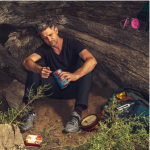One of the most popular articles we’ve published in UX Mag advocates that experience designers would be wise to get in the headspace of traditional architects. The reasons for this are clear: like experience designers, architects are balancing aesthetics with usability—solving problems by crafting solutions that embody balance.
We’re also often aiming for the same Vitruvian Virtues—solidity, utility, and beauty—as our brick and mortar-bearing brethren. But our process looks a little different. Typically, an architect gets every detail perfect on paper before a bulldozer blade even scratches the building site. In UX, we use wireframes and prototypes to create budding iterations of our solutions. In effect, erecting straw versions of the building to see if it stands up once users are inside.
Naturally, this approach comes with some problems. It’s often difficult to carry an understanding of the design process across disciplines internally, and externally, to the client. After all, a client can look at a blueprint and envision the finished building, but trying to imagine what the end experience will be like from a wireframe and whatever that might be on the dry-erase board requires some inside knowledge.
A Different Kind of Blueprint
For DDB & Tribal Amsterdam, winner of the Design for Experience award for Strategy to Execution, taking a more agile approach to the user-centered design process has proven successful in moving past the traditional agency/client relationship, enabling them to work together with the client as a kind of lean start-up.
“This not only eliminates a lot of time and thought consuming business overhead. It spreads the understanding of the design process among internal and external stakeholders,” says Ellen van den Berg, Head of UX for the agency. “It stimulates open communication and demonstrates the process in all phases, basically making both client and agency equal product owners in the process, and therefore equally responsible for the successful outcome of the project.”
To test this notion, DDB & Tribal Amsterdam engaged in an innovative project with Heineken—the goal being moving from idea to finished product in just 10 weeks, something they called Spark.
The Spark process began with a three-day hotel lock-in with the client, in a positive, constructive atmosphere with a healthy division between work and play. Rather than going into the three-day brainstorm with a brief, the outcome was the brief. The only input going in was: “Heineken mobile innovation.” The idea coming out: the bottle should play a key role in the user interaction.
What followed was 10 weeks of concepting, designing, and prototyping in advance of the initial product launch during Milan Design Week.
“The very fact of setting a bold goal in a short amount of time forced us to continue acting as a lean start-up,” van den Berg says. “Instead of outsourcing critical resources (like electronics engineering) we brought them in. Whatever we could not bring in (like electronics assembly robots) we gave out to small, flexible, local companies with a passion for their business.”
And Then, Illumination
The prototype, Heineken Ignite, was a typical Heineken bottle with an extra ring on the bottom that holds a removable round disc loaded with a circuit board and LED lights. The goal was to create a product experience that would unite users through technology without forcing them to reach for their phones. These bottles would light up when partygoers toasted with them, and would respond with syncopated blinking lights when the DJs started spinning.
By the final week, parts of DDB & Tribal Amsterdam’s headquarters had become a production facility where housings were being glued to bottles and circuit boards were bring tested, assembled, and wrapped up for transport. The client remained an important part of the team, and once the prototypes were ready, user testing went down at Heineken’s venue at Milan Design Fair.
Based on the success of the interactive bottle prototypes, Heineken finished the end product and rolled it out in nightclubs across the globe. DDB & Tribal Amsterdam has further developed Spark and used it successfully in several client projects—some of them with a heavy focus on user experience, some of them focusing more on creative or strategic solutions.
“For a large number of traditional agencies, truly co-creating, across internal disciplines, such as creative, visual design, UX, and strategy seems a challenge in itself,” van den Berg says. “This often results in fragmented deliverables—not providing a coherent user experience across brand touch points. The Spark process has further strengthened our internal co-creation process. Adding to that collaboration between client and agency, both taking an equal share in product ownership, with Heineken Ignite as one of our most inspirational cases.”
So by modifying the traditional user-centered design process, DDB & Tribal Amsterdam has been able to achieve solidity, utility, and beauty—those same Vitruvian Virtues traditional architects pursue—digging the foundation and hanging the chandeliers at the same time.







